Orthodox Easter in Crete: Traditions & Customs
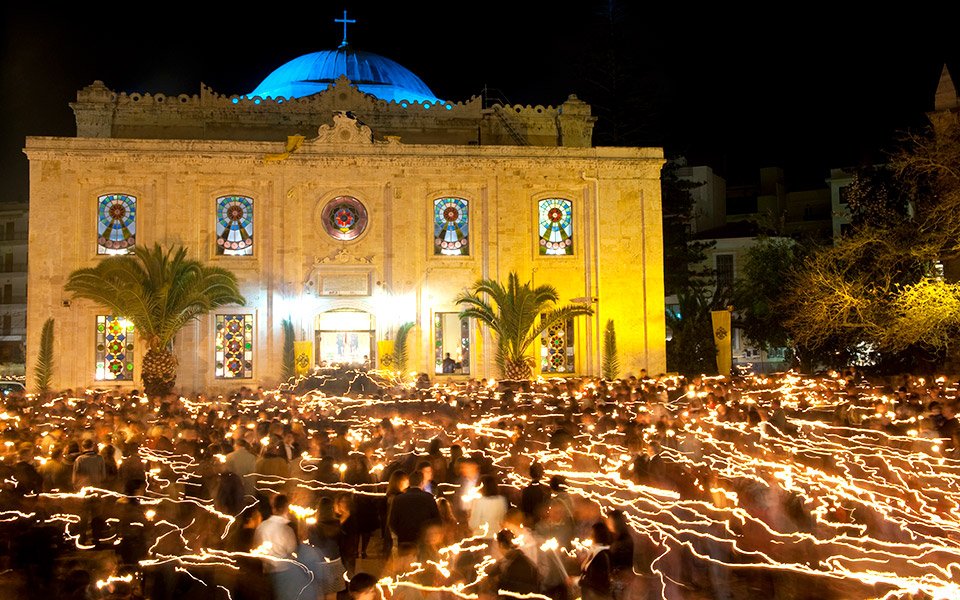
Orthodox Easter customs were many in the past, but as time goes by, many of them begin to fade. Some Orthodox Easter traditions have been unfortunately completely lost, and others seem strange and odd today. However, many of these traditional customs in the villages of Crete have not changed much, and continue to this day.
In this article we analyze the religious and culinary traditions in Crete during Orthodox Easter. We begin with the traditions of the Holy Week and continue with the customs of Easter Sunday and Monday to end with the gastronomic delights Cretans eat during the Great Lent. Enjoy!
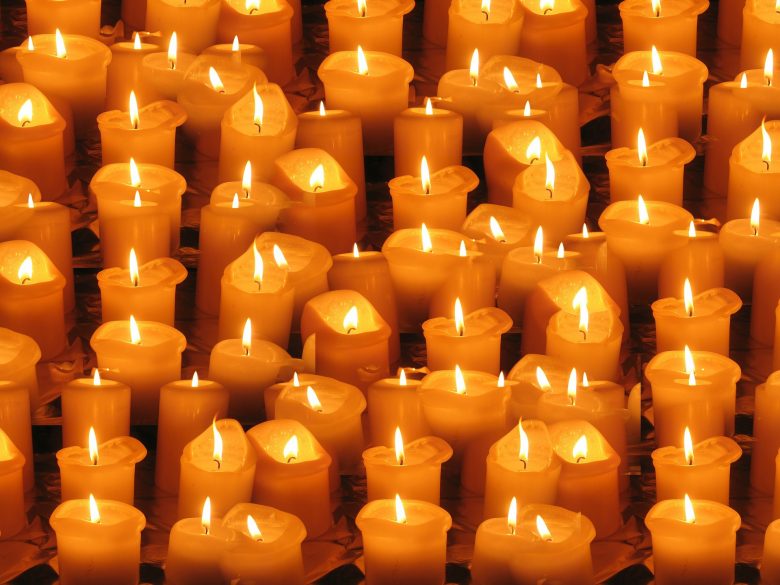
Passion Week
In a nutshell
In Crete, throughout the Holy Week Cretans do not listen to songs, they do not sing or whistle. Boys and older men cut wood during the Holy Week, and on Holy Saturday they make the ravine 3-4 meters high and 6-8 meters wide to burn the statue of Judas. On Maundy Thursday, they make a human figure out of wood, the «Judas», which is circulated in all the houses of the village and beaten for his infamous betrayal. The women dress him in old clothes they don’t want anymore.
The unmarried girls pick lilies, roses, lemon blossoms, and other flowers from the gardens to decorate the Epitaph on Maundy Thursday. In Crete and especially on Good Friday there is a custom for the priest to mention within the Church before the procession of the Epitaph the names of all the deceased fellow villagers of each family, even many generations ago.
On Holy Saturday, they place the statue of Judas on the ravine with the wood. On the night of the Resurrection, with the Risen Christ, the girls set fire to Judas, who burns with the necessary ballots and while even enemies that day give the kiss of Love in the churchyard.
The beginning of the Holy Week
From Holy Monday, the preparations for Easter begin with the housewives whitewashing their houses, cleaning the yards, the streets, and giving a special bright look to the house to welcome the Resurrection. On Holy Wednesday and after the completion of the Extreme Union in the churches, the preparations for the kneading begin in the houses.
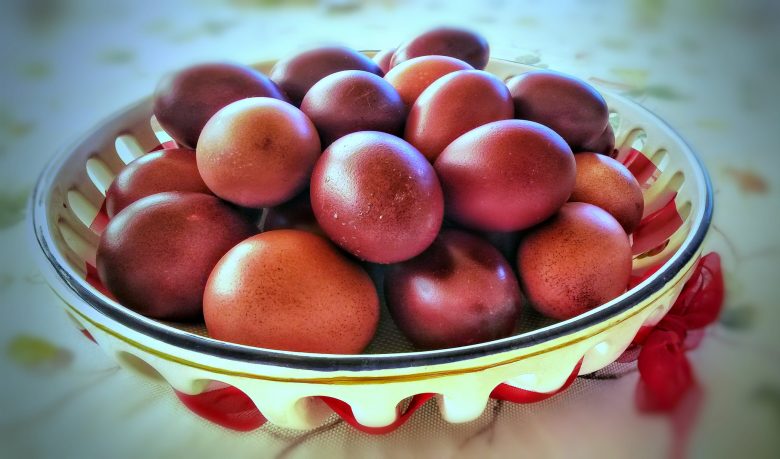
The day of Preparation — Maundy Thursday
On Maundy Thursday, women knead and bake the Easter buns (tsoureki) as well as the egg rolls stuffed with chives and red eggs, which are usually intended for the children of the family. Kalitsounia (handmade pies with mizithra, which used to be fried and not in the oven)and ‘lambrokouloures’ are kneaded.
They are also busy painting the eggs, which used to be made from the colors of the flowers, mainly the red poppy. In fact, on the eggs, before painting them, small flowers were stuck and so their designs were imprinted on them. Today, however, ready-made dyes or ready-made red eggs predominate.
However, on Maundy Thursday, women are not limited only to the preparation of sweets. Mainly, in the villages, they go out to the fields to collect lemongrass and wildflowers. They make wreaths to place them at night on the Crucified Jesus. Nevertheless, on Maundy Thursday, according to the prevailing tradition, no one should hold a nail, hammer, because it is «like crucifying Christ».
The day of Mourning — Good Friday
A custom that is still alive on Good Friday is that of collecting flowers. Children of all ages go out into the streets and collect flowers from the courtyards of the houses. The bring them in small baskets to the churches to decorate the Epitaphs. In addition, in the villages of Crete in the area of Pediada there is the custom that young men and women sing carols. Holding a Cross with a wreath they roam the streets of the villages passing door-to-door and chanting.
On Good Friday night, the procession of the Epitaph takes place. In some villages, the procession takes place not only in the streets but also in the cemetery. The Cross and the Epitaph are transferred to a memorial for the priest to commemorate the dead. In Heraklion, during the procession, the Epitaphs of various churches meet at the cross of the city where prayers are returned by the priests. Furthermore, after the procession of the epitaph, the people of Heraklion go to taverns to drink raki and ouzo and eat fasting delicacies. Something similar happens in the surrounding villages and all over Crete.
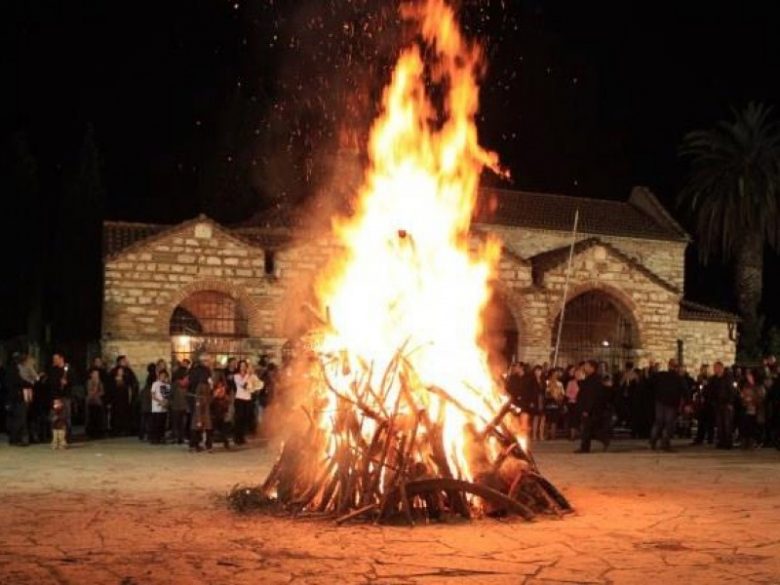
The message of the Resurrection — Holy Saturday
After the first Resurrection on the morning of Holy Saturday, the faithful reverently carry home the flowers from the Epitaph. On the night of Holy Saturday and shortly before the Resurrection, children take the «buoy» and go around the neighborhoods, hitting it and inviting the faithful to go to church.
Moreover, before the Resurrection, children in the villages gather wood. According to tradition in some areas they steal them from houses, or ask their fellow villagers. They leave them in the courtyards of churches to light a fire at night. A statue of Judas is in the woods and when the priest chants «Christ is Risen» they set fire to it and burn it.
Also, a special custom that exists in Agios Nikolaos Lassithi is the burning of Judas in the picturesque lake of the city. In the area of the lake and on the platform the procession from the church of Agios Georgios with thousands of believers holding candles and lanterns wait for the spectacle. In the middle floats a raft on which hangs Judas. When the priests from the platform chant «Christ is Risen», a flame «descends» from the rocks and the wood under the gallows of Judas catches fire. As a result Judas burns. The impressive colorful fireworks catch the eyes of the visitors and residents who enjoy a unique custom that dates back to the 1970s.
The village bell rings and the sky is decorated with colorful sparklers. In many areas, mainly in the countryside, you can hear bullets (shots in the air).
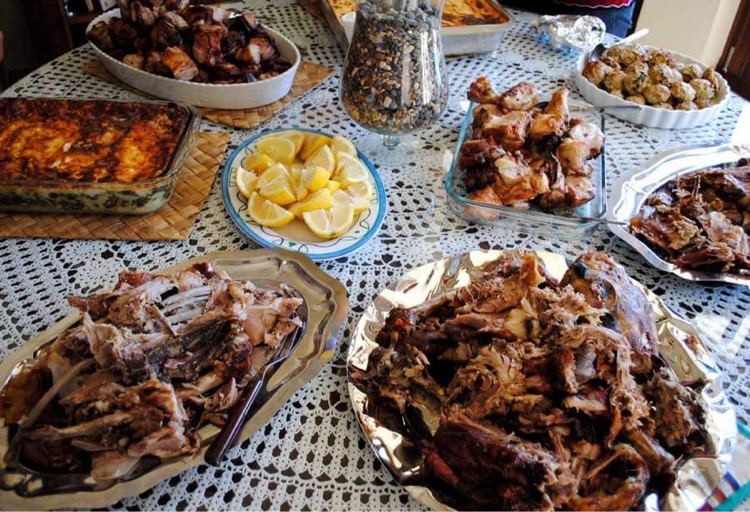
The day of the Feast — Easter Sunday
A day where people are happy, and celebrating the Resurrection by feasting on delicious delicacies. Friends and family all gather together to eat and drink, sing and dance. Various pies, cheese, spinach, leek, meat fill the table with their amazing flavors and aromas. Fresh salads with seasonal vegetables and spices decorate the table with their colors.
The Easter table all over Greece may include lamb, but in Crete, it is not that common. In Crete, antikristo replaces the lamb on the spit and the gardoumakia the traditional ‘magiritsa’. The antikristo, a trademark of Crete and famous for its unique taste. They cut it in large pieces and during roasting the coals are in the middle and the antlers are fixed.
The gardoumakia
It is an excellent meze and tasty choice that is common at the Easter table. For their preparation, they use the belly of a lamb or a goat. They cut into pieces, wash it as well as the intestines and wrap it. It is baked in the pot and can be enriched with egg lemon. This neutralizes the intense smell of the intestines. Cretans either fry the livers and the rest of the offal or they make a kokoretsi. As time goes on, the specific foods that were especially common when the animals were slaughtered in the countryside disappear.
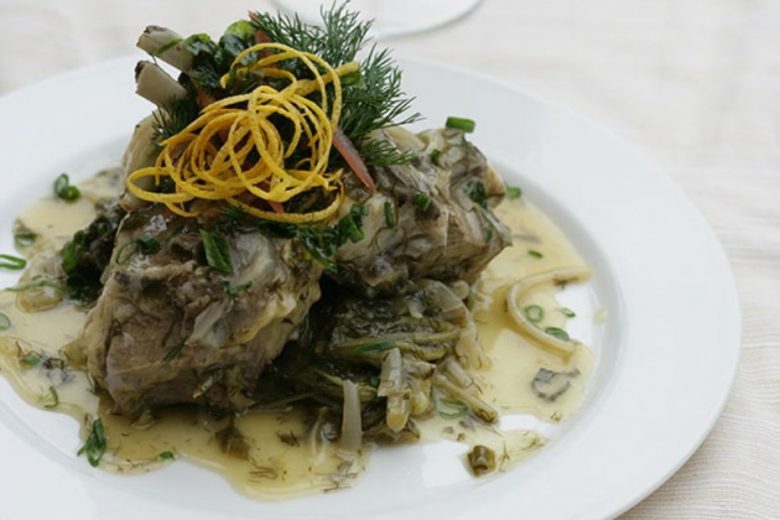
Goat with Egg Lemon Sauce
An alternative form of soup to get the stomach smooth from the fasting period to the Easter period. They cook the goat in the pot with herbs such as askolymbros, stamnagathi, avronies, and endives. After they cook it in an egg-lemon sauce. It is the food Cretans consume on the night after the Resurrection in many areas. Why? To «prepare» their stomachs for the feast that follows the next day.
The Easter of the Dead – Easter Monday
On Easter Monday, a special custom is revived in the village of Tylisos in Heraklion, which takes place in the village cemetery. This is the so-called «Easter of the Dead». The villagers gather at the cemetery in a celebration to commemorate their dead. They share with them the festive meals of Easter, in a bridge meeting between the two worlds. Therefore, after the morning service, the residents of Tylisos head to the cemetery holding Easter appetizers, red eggs, kalitsouni, meat, sweets, wine and deposit them on the memorials. The priest of the village passes by the graves and commemorates the dead. Then the gathered people consume the Easter dishes accompanied by wine and tsikoudia, creating a festive atmosphere in the cemetery. This way they do not forget their loved ones who have passed away. While «conveying» the joyful message of the Resurrection.
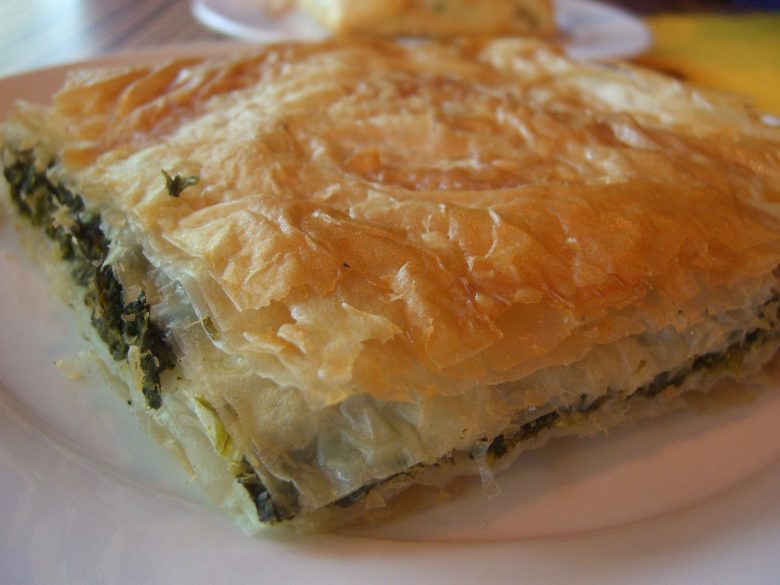
Culinary Delights that are eaten during the Great Lent
The Great Lent and Fasting
For 48 days before Easter, as many as the days that Christ fasted in the desert, Orthodox Christians fast as well. The fast of Easter is also called «Great Lent», because it is longer than the others (Christmas, August 15, etc.). Fasting before Christmas lasts 40 days and fasting before Easter lasts 48 days. In early Christian times the period of Lent was dedicated to the preparation of the Catechumens, who were baptized on Easter day. On Palm Sunday the fish consumption is allowed.
Lent Traditional Food
The main dishes prepared by the housewives of Crete for Easter Lent are the wild greens. Such examples are kalitses (sweet early wild radishes), askolymbros (wild-thorny greens), psikosirides (bitter bad in appearance, but tastier wild greens), stamnagathi (thorny radish), etc. Of course we also love, snails (boiled snails, buds, etc.), papoulias (boiled legumes), porridge (with ground wheat), ‘bruvopites’ (pies with greens), and beans (boiled and mashed).
Benefits of Fasting
Fasting and customs are not only ideological symbolism but also helps our health. Although fasting can be challenging and sometimes uncomfortable, the mental and physical benefits can:
- Boost cognitive performance
- Protect from obesity and associated chronic diseases
- Reduce inflammation
- Improve overall fitness
- Support weight loss
- Decrease the risk of metabolic diseases
- Benefit cancer patients. Ridding the body of old, toxic cells and replacing them with new, healthy ones may be just the answer.
We wish you a Happy and Healthy Orthodox Easter!
